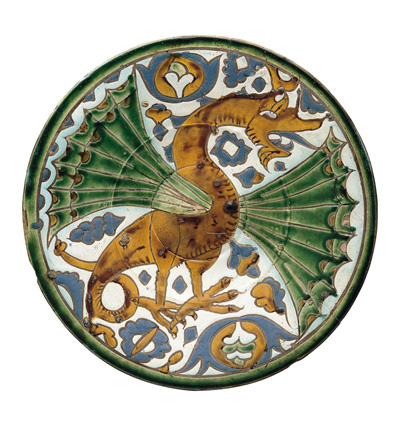Plates
ca. 1500
Seville
Tin-glazed earthenware with cuerda seca decoration
H. 5.5 cm. diam. 38 cm; h. 6.3 cm, diam. 39.5 cm
The technique for producing cuerda sera ceramics was one of many Middle Eastern technologies introduced to the Iberian peninsula. In this process, the ceramist draws the design in manganese mixed with oil or fat that will both create an unglazed space and prevent the colored glazes from mixing when they are fired.
Cuerda sera wares were produced in Spain as early as the eleventh century, in the era of the first Taifa kingdoms, in pottery centers such as Toledo, Saragossa, Valencia, Majorca, Badajoz and Murcia. By the late fourteenth century, Seville and Toledo had emerged as the major centers of production. Due to the difficulty of firing cuerda seca ceramics, few cylindrical shapes exist and most vessels are horizontal forms, such as tiles. This technique did not lend itself easily to the complex lacement decoration typical of mudéjar-style ornamentation. Rather, more rounded vessels were better suited for large bold imagery, such as these images of a harpy and a dragon.
Text and images © Hispanic Society of America.
